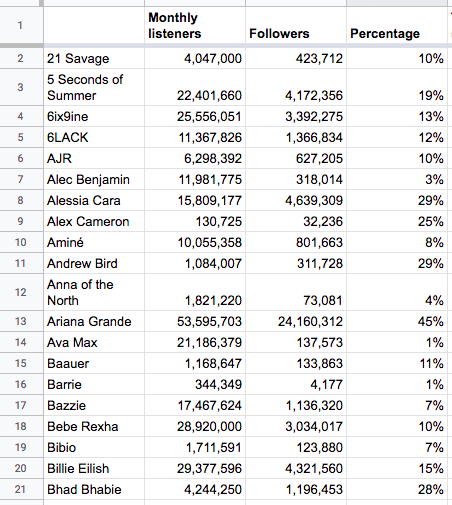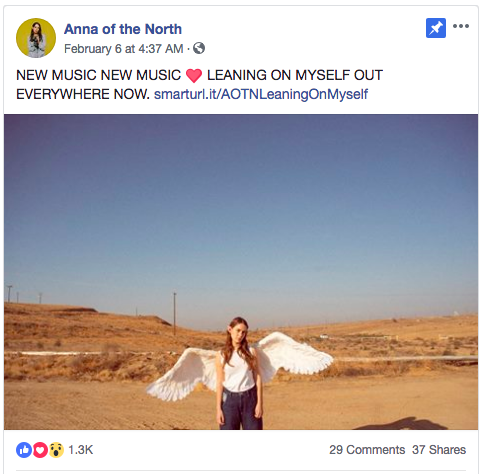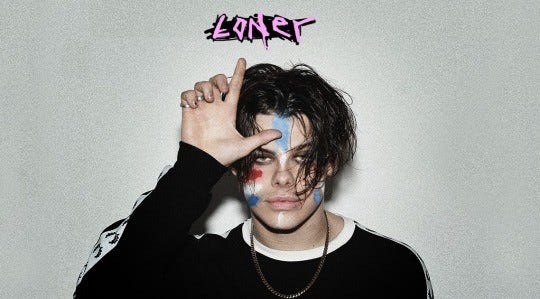In this piece Amber Horsburgh breaks down some interesting streaming statistics suggesting that, contrary to many conventional marketing theories, marketing to listeners who have never heard your music can be a more profitable approach than trying to cultivate a rapid central fanbase.
______________________________
Guest post by Amber Horsburgh.
Amber writes about music strategy via her fortnightly newsletter, Deep Cuts, Subscribe here. This article originally appeared on Medium
How do you build an artist’s brand? Can you do it from the bottom up amassing fan after fan until there’s a rabid enough base to breakthrough? It’s a commonly held belief that breaking songs is the result of huge vocal, dedicated fan-bases but fans aren’t actually that loyal.
To test this, I analyzed 107 artists on Spotify comparing followers to monthly listeners, using followers as a proxy for fans/heavy users. Only 24% of an artist’s total listenership is made up of fans. That’s it.
What’s perhaps even more grim is that for smaller acts (<1M followers, e.g.: Jeff Tweedy), the average is lower at 11%, whereas big acts (>1M followers, e.g.: Dua Lipa) it’s higher at 26%. This challenges the notion that building artists happens from engaging the hyper-dedicated core fan base of early adopters and instead results from increasing market share by adding more light listeners, which may not stick around for the next release.
To view the raw data, see here.
Although, not a perfect measure for loyalty followers to monthly listeners is a fine proxy. This finding is supported by marketing science of Byron Sharp, who tracked purchasing patterns of grocery products finding the bottom 80% of customers (light users) were most profitable in the next year and the top 20% aka “brand loyalists” bought less over time, becoming less valuable. Big brands have known this for years and from Facebook to Quaker Oats have altered their marketing to amass huge audiences by focusing on light users, and musicians should too.
Music listeners are rarely loyal to one act
Imagine going to work, popping on headphones and listening to one artist for the entire work day then doing it again the next day and the next. Inevitably, you’ll max out the artist. Sharp calls this the “regression to the mean” and what this tells us, is increasing listenership from existing fans will cap out eventually, thus needing to add new listeners.
Even the best buyers aren’t that loyal: There’s an inevitable “regression to the mean” where heavy buyers often buy less over time; light buyers buy more; and some non-buyers become buyers. So brands can’t afford to count anyone out — Byron Sharp, How Brands Grow
Spending marketing $$$ to only reach fans misses big opportunities
There’s two problems if only marketing to fans:
- You’ll reach your ceiling 4 times earlier than if you’d reach light listeners
- You’re selling to people who are already bought in
A great example of this happened just last week where my Anna of the North obsessed partner said to me “whoever’s doing Anna of the North’s paid media is on it” then went on to describe that she was following him around the Internet with ads on Instagram and Facebook.
Although he’s more than fine with her in his feeds, there’s a missed opportunity advertising to the converted — someone who’s already going to her LA show and would’ve listened to her new stuff on Friday regardless.
If you’re managing a $1MM budget to break a pop act, marketing to people that would already buy, listen and watch limits the potential audience.
To grow market share, you need to amass many light listeners who may listen only a few times
To truly scale as an artist, you need to increase listeners, most of which will be light and infrequent choosing your music only occasionally. This happens from being physically and mentally more available for the listener. When you listen to music you are triggered not by the artist but by a mood, event or emotional state so the marketer’s goal is to make the artist the first choice for consumers when triggered. You must continuously reach large numbers of light listeners cost effectively.
This is especially true for new release campaigns. If an artist is actively promoting a record, the share of fans drops even lower, as little as 8% for YUNGBLUD, James Blake or Sharon Van Etten all of whom released new music in the past month. On the other hand, if you’re off-cycle that number bumps up to as much as 67% for Lana Del Rey or 73% for Jack White. For YUNGBLUD, to build audience he needs to constantly add new listeners to the pipe, some which will sustain him off-cycle but rarely will they scale his new releases.
Next week I’ll follow this post with marketing strategies for light listeners and building market share. For now, subscribe to my newsletter, Deep Cuts, for more things music marketing.



